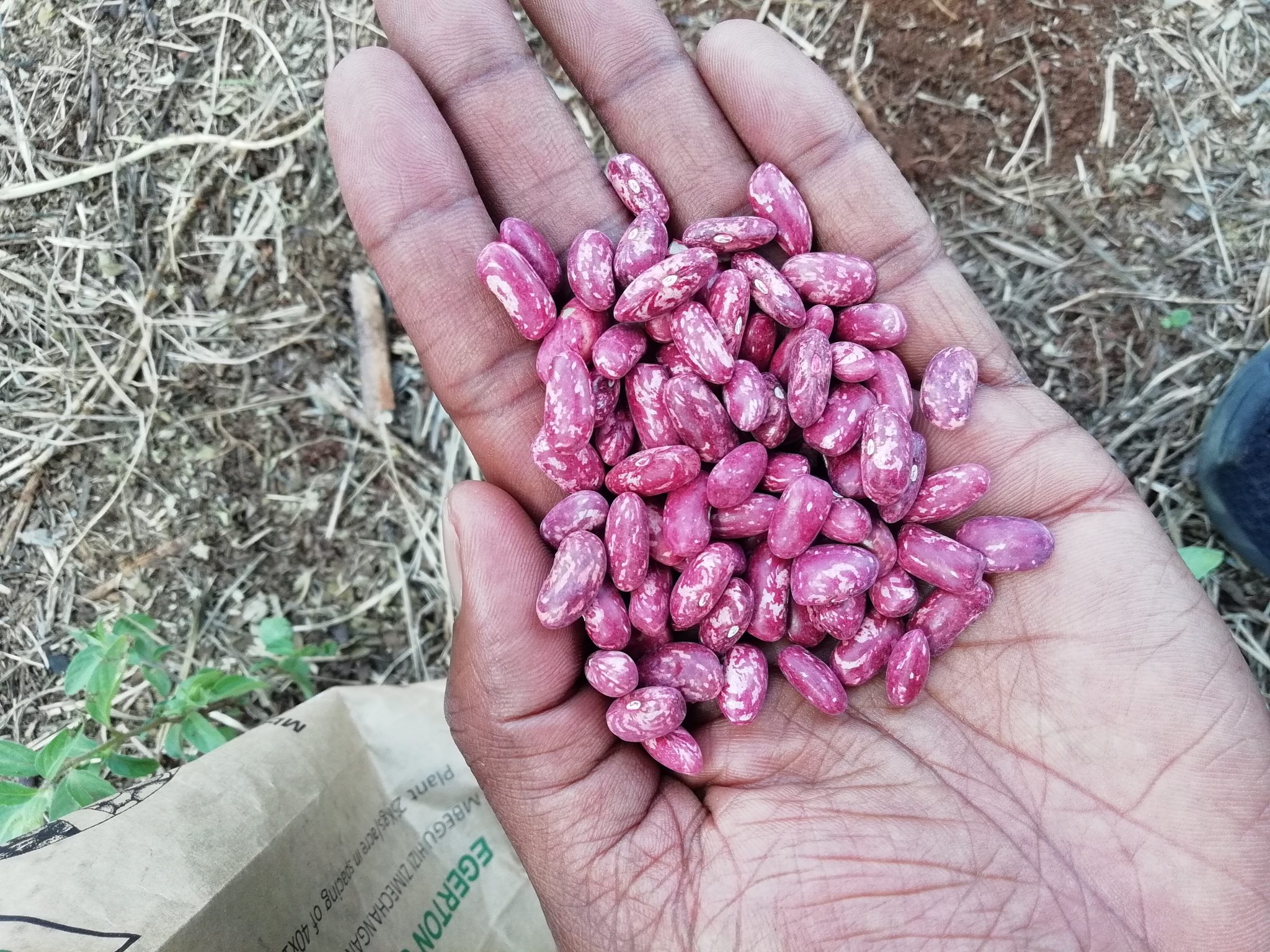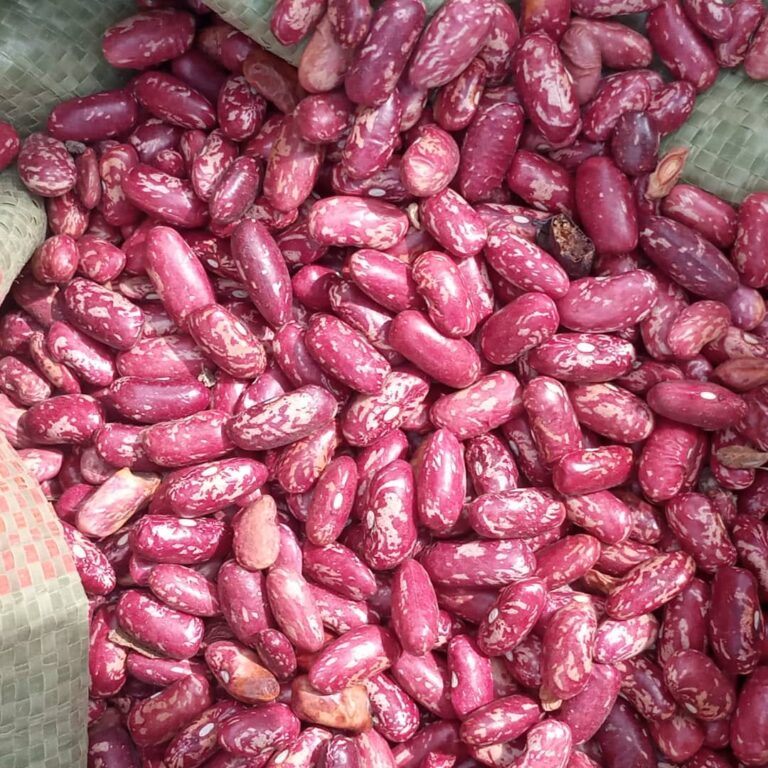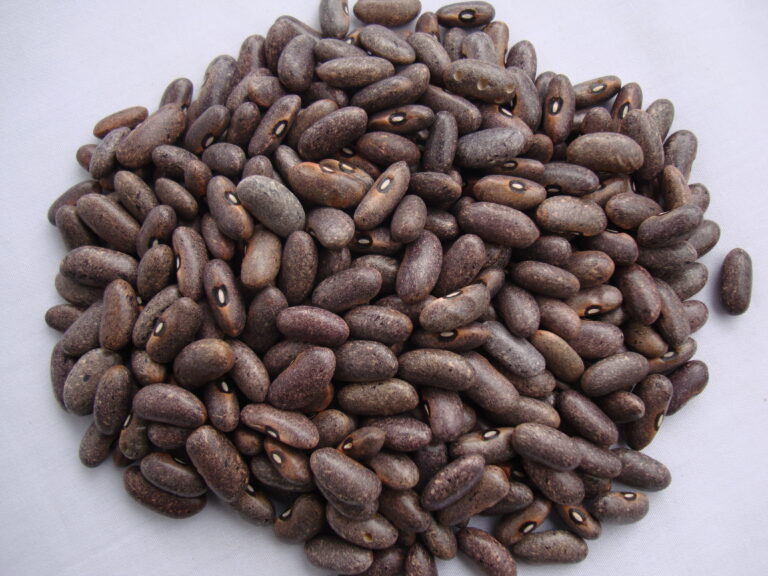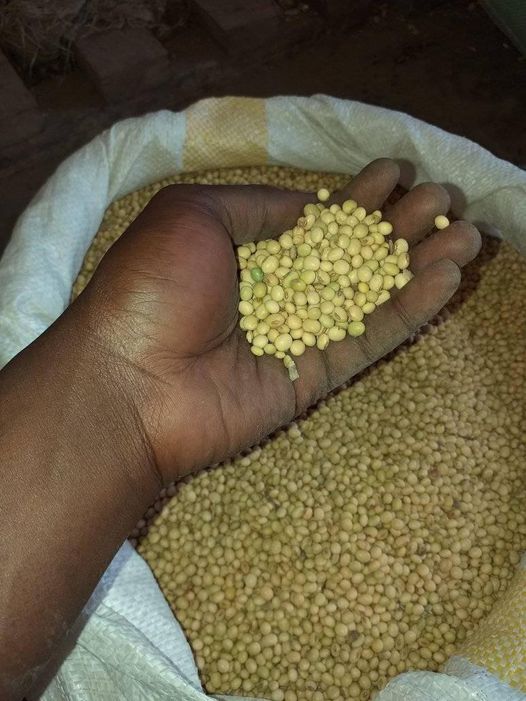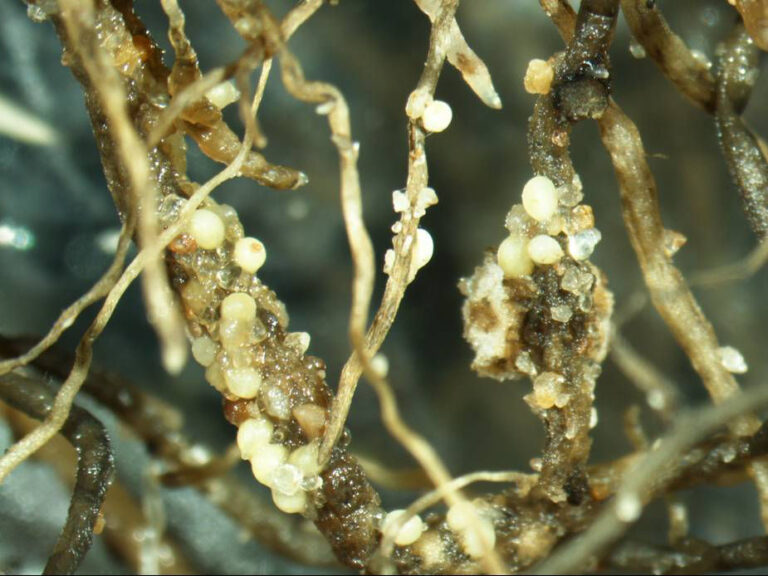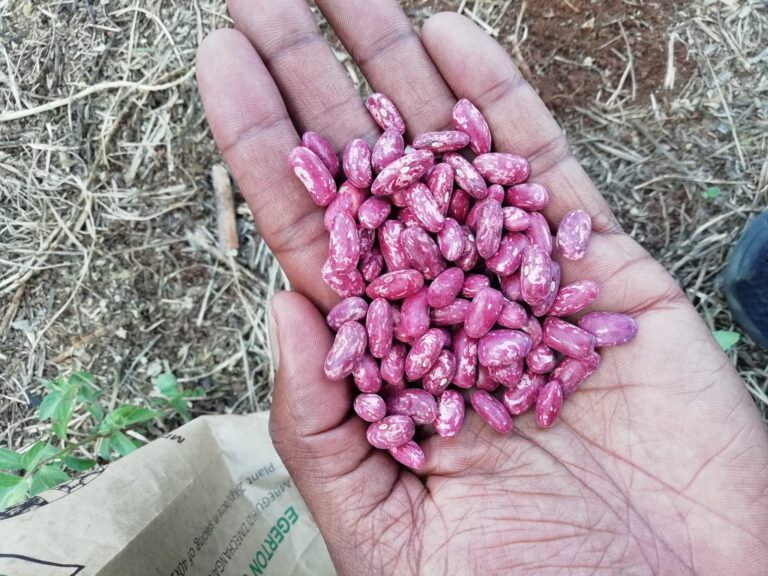Chelalang Beans Variety Yield Per Acre
On average, Chelalang beans can produce about 600kgs to 1200 kgs (8 -12 bags per acre (1 bag = 90 kg)) per acre under optimal conditions. Proper use of fertilizers, pest management, and irrigation can significantly influence the yield.
The yield of Chelalang beans, a variety developed in Kenya, can vary depending on several factors such as soil fertility, climate, and farming practices.
When considering the yield per acre for Chelalang beans, several factors include soil quality, weather conditions, and farming practices. Here’s a comprehensive overview:
Chelalang Beans Variety Average Yield
- Optimal Conditions: Under ideal conditions with proper management practices, Chelalang beans can yield approximately 8 -12 bags per acre (1 bag = 90 kg).
- Average Conditions: In typical farming conditions, farmers can expect around 8-10 bags per acre.
How Does Chelalang Bean Yield Compare To Other High-Yielding Varieties
Chelalang Bean Yield
- Chelalang beans are a high-yielding variety that can produce up to 600 kg -1200 kgs per acre (around 8-12 bags per acre).
- Chelalang beans are resistant to diseases like powdery mildew and rust, and can be grown in a variety of soil conditions.
Comparison to Other High-Yielding Varieties
- Nyota beans can yield 800-1200 tons per acre (around around 6-10 bags of 90 kg per acre).
- Angaza (KMR 11) beans can yield 6-12 bags per acre.
- Tasha beans can yield 500 kg per acre.
- Ciankui beans can yield up to 1,000 kg per hectare (around 10 bags per acre).
- Faida (KMR 13) beans can yield 700kg-1.2 tons per hectare (around 14-20 bags per acre).
So in comparison, Chelalang beans have one of the highest yields among the improved bean varieties available in Kenya, producing around 10-12 bags per acre on average, and up to 19.4 bags per hectare under optimal conditions.
This makes Chelalang a highly productive and desirable bean variety for Kenyan farmers.
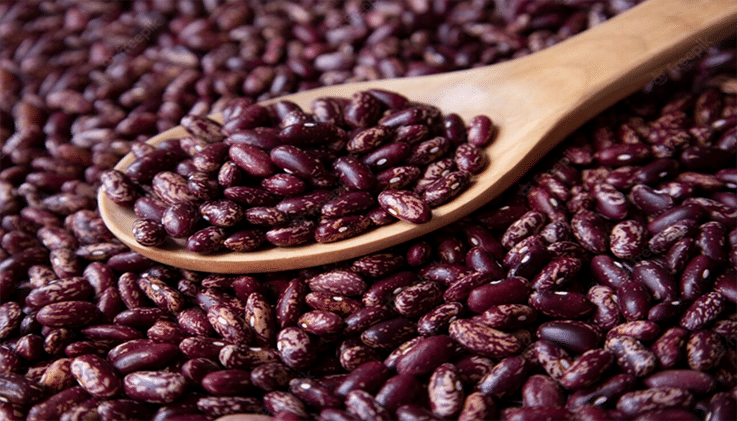
Factors Influencing Chelalang Beans Variety Yield
- Soil Quality:
- Fertility: Well-drained, fertile soils with a pH of 6.0-6.8 are ideal.
- Preparation: Proper land preparation, including plowing and harrowing, ensures good seedbed conditions.
- Climate:
- Rainfall: Requires moderate rainfall (500-600 mm) spread over the growing season.
- Temperature: Thrives in temperatures between 18-30°C.
- Planting Practices:
- Seed Rate: Use a seed rate of about 25-30 kg per acre.
- Spacing: Plant with a spacing of 45 cm between rows and 10-15 cm between plants.
- Fertilization and Weeding:
- Fertilizers: Apply phosphorus-based fertilizers at planting and nitrogen-based fertilizers during growth.
- Weeding: Regular weeding is crucial to reduce competition for nutrients.
- Pest and Disease Control:
- Regular monitoring and timely application of appropriate pesticides and fungicides help maintain plant health and optimize yield.
Best Practices for Maximizing Yield
- Crop Rotation: Rotate with cereals like maize to prevent soil nutrient depletion.
- Irrigation: Supplemental irrigation can be beneficial during dry spells.
- Integrated Pest Management: Employ natural pest control methods to reduce reliance on chemicals.
Chelalang Beans Variety Prices in Kenya
The price of Chelalang beans varies but can fetch between Ksh 7,000 to Ksh 12,000 per 90 kg bag depending on the market conditions. On average, Chelalang beans can produce about 600 to 1200 kgs (8 -12 bags per acre (1 bag = 90) making it Ksh. 56,000 to Ksh. 144,000 per acre per season.
Chelalang beans are a versatile variety developed by Egerton University, known for its drought resistance and suitability for medium to high altitudes. It yields approximately 600 kg per acre and matures in about 90 days. It is also tolerant to root rot disease and acidic soils.
Farmers have embraced Chelalang beans due to their high yield potential and quick maturity, which allows for intercropping with other crops like tomatoes and potatoes.
Beans farming in Kenya, including Chelalang beans, can be profitable with proper planning and choosing appropriate varieties for specific ecological conditions.
Chelalang beans seed are available for purchase from various suppliers like Atana, offering 2 kg packets at Ksh. 750 suitable for planting in different regions
Chelalang Beans Farming In Kenya
Characteristics of Chelalang Beans
Chelalang beans are a versatile legume known for their high yield and adaptability. They have a distinct flavor and nutritional profile, making them a favorite among consumers. These beans thrive in tropical and subtropical climates, where they can be grown year-round.
Ideal Growing Conditions
Climate Requirements
Chelalang beans require a warm climate with temperatures ranging between 20°C to 30°C. They are sensitive to frost and perform best in regions with well-distributed rainfall.
Soil Preferences
Well-drained, fertile soils with a pH of 6.0 to 6.5 are ideal for Chelalang beans. Soil should be rich in organic matter to support healthy growth.
Watering Needs
Adequate and consistent watering is crucial, especially during flowering and pod development. Drip irrigation is recommended to conserve water and ensure even distribution.
Soil Preparation
Soil Testing
Before planting, conduct a soil test to determine nutrient levels and pH. This helps in making informed decisions about soil amendments.
Fertilization Techniques
Incorporate organic compost and well-balanced fertilizers to enrich the soil. Phosphorus and potassium are particularly important for root development and pod formation.
Planting Chelalang Beans
Seed Selection
Choose high-quality, certified seeds to ensure good germination rates and healthy plants. Seeds should be disease-free and stored in a cool, dry place.
Planting Methods
Chelalang beans can be planted directly in the field or started in seed trays for later transplantation. Direct sowing is often preferred for its simplicity.
Spacing Guidelines
Maintain a spacing of 30 cm between rows and 10 cm between plants. This ensures adequate airflow and reduces the risk of disease.
Growth Stages of Chelalang Beans
Germination Phase
Germination takes 7-10 days under optimal conditions. Ensure the soil is moist but not waterlogged during this phase.
Vegetative Phase
During the vegetative phase, focus on promoting strong stem and leaf growth. Regular weeding and pest control are essential.
Flowering and Pod Development
Flowering begins about 6-8 weeks after planting. Ensure adequate water and nutrients during this critical phase to maximize pod formation.
Nutrient Management
Essential Nutrients
Chelalang beans require nitrogen, phosphorus, potassium, and micronutrients like iron and zinc. Use a balanced fertilizer to meet these needs.
Fertilizer Application Schedules
Apply fertilizers at planting and during key growth stages. Foliar feeding can be beneficial during flowering and pod development.
Water Management
Irrigation Methods
Drip irrigation and sprinkler systems are effective for Chelalang beans. Ensure regular watering, especially during dry spells.
Water Conservation Tips
Mulching helps retain soil moisture and reduce evaporation. Use organic mulches like straw or grass clippings.
Pest and Disease Control
Common Pests
Aphids, bean beetles, and leafhoppers are common pests. Regular monitoring and the use of natural predators can help control these insects.
Disease Prevention and Treatment
Root rot, rust, and powdery mildew are common diseases. Use disease-resistant varieties and practice crop rotation to minimize risk.
Weed Management
Weed Control Techniques
Manual weeding, hoeing, and the use of herbicides are effective weed control methods. Ensure timely weeding to prevent competition for nutrients.
Mulching Benefits
Mulching suppresses weed growth, conserves moisture, and adds organic matter to the soil. It is a sustainable weed management practice.
Harvesting Chelalang Beans
Signs of Maturity
Beans are ready for harvest when the pods are fully developed and start to dry. Check for uniform pod color and firmness.
Harvesting Methods
Handpicking is the preferred method to avoid damaging the pods. Mechanical harvesting can be used for large-scale production.
Post-Harvest Handling
Drying and Storage
Dry the beans thoroughly before storage to prevent mold and spoilage. Store in a cool, dry place in airtight containers.
Quality Control
Regularly inspect stored beans for signs of pests or spoilage. Maintain proper hygiene and storage conditions.
Economic Benefits
Market Demand for Chelalang Beans
Chelalang beans are in high demand due to their nutritional benefits and versatility. This creates lucrative opportunities for farmers.
Profitability Analysis
Assess the cost of production versus market prices to determine profitability. Efficient management practices can significantly boost profits.
Sustainable Farming Practices
Eco-Friendly Farming Methods
Incorporate organic farming practices, reduce chemical use, and adopt sustainable water management techniques to promote long-term soil health.
Crop Rotation Benefits
Rotating Chelalang beans with other crops improves soil fertility, reduces disease risk, and enhances yield over time.
